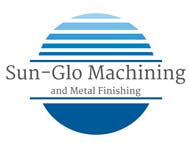When in its elemental form, cadmium is a soft, silver-white metal. However, it is not usually found in the environment as a pure metal, but rather as complex oxides, carbonates, and sulphides in zinc, lead, and copper ores. Cadmium is mainly produced as a by-product of mining, smelting, and refining zinc, and in lead and copper production. Any natural sources of cadmium found in the environment is due to mobilization of naturally occurring cadmium that is found in the Earth’s crust and mantle through volcanic activity and weathering of rocks. Although cadmium is toxic to humans, plants, animals, and micro-organisms and cannot be broken down into less toxic substances, it is used as a versatile metallic coating—cadmium plating. But why would we want to use something toxic to plate steel, cast iron, malleable iron, copper, and powered metal? Because electroplated cadmium provides countless benefits!
CORROSION RESISTANCE:
Cadmium plating serves as a “sacrificial coating,” meaning it is applied in thin layers as a form of corrosion control and is coated over with chromate conversion coatings. This second coating enhances the corrosion resistance of cadmium plating while giving it that golden yellow color we know so well. Cadmium plating is more resistant than zinc plating in both industrial settings and salt-water environments. While nickel offers better corrosion resistance than cadmium, cadmium is superior in lubricity and malleability.
ADHESION AND LUBRICITY:
When an object is plated with cadmium, the surface of this object becomes more bondable to adhesives. This makes cadmium plating a great base for paint, and because of its exceptional lubricity, it is a commonly used material in aircraft manufacturing; however, it is not recommended to be used in spacecraft manufacturing because of its tendency to transfer, outgas, and spontaneously form whiskers in a vacuum. The lubricity of cadmium plating is extremely useful when components that will be repeatedly disassembled and reassembled must be plated, or for moving and rotating components. Electroplated cadmium reduces friction, which is highly important when different metal surfaces will be constantly touching one another.
APPEARANCE:
Not only is cadmium plating more resistant than zinc plating, but cadmium plating also retains its original appearance far longer than zinc. Electroplated cadmium is resistant to mould and bacteria growth. There are four finishes available for cadmium plating, all of which offer a very different look. Cadmium plating can be bright, giving a surface a silvery appearance, or dull, much like cadmium’s natural matte state. Applying a dark green finish to cadmium plating further increases corrosion resistance, but the most familiar finish is chromate, which gives the plating a golden yellow coloring while also providing a high degree of protection against atmospheric corrosion.
In addition to these three main benefits, cadmium plating has low electrical resistance and exceptional conductivity, favorable compatibility with aluminium, and superior solder ability. It’s the top choice when you are considering which substance to choose to plate your metal products.
Sun-Glo Machining and Metal Finishing
quotes@sun-glo.com
800-741-1456
